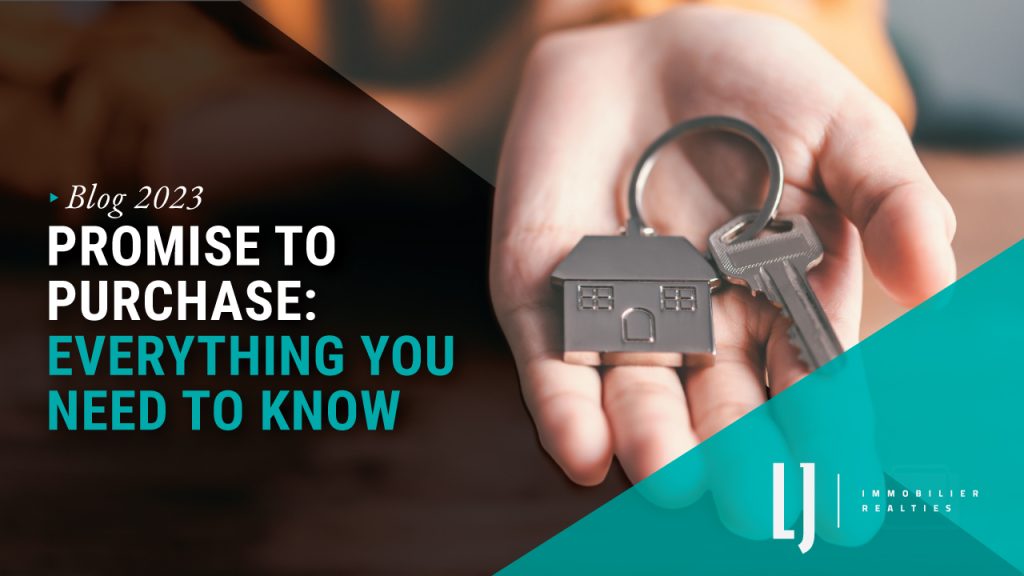
What goes into an offer? This piece will break down, step by step, every single section of a “promise to purchase” agreement so that you’re ready to write your own when the time comes!
The first part of a promise to purchase is the identification of the parties. That’s where we’re going to outline who Buyer One is, as well as Buyer Two, Three, and more, if necessary. The same goes for Seller One, Seller Two, and so on. You’ll need their names, their addresses, and basic contact information.
The second part is where you identify your real estate broker. Which company or real estate agency do they work with, and what is their license number?
In section three, we describe the property. What is the address, the cadastre, or the lot number for the property? We will also provide the lot size and any relevant information of that nature.
For section four, we’re going to discuss the price. What is the offer? Here, we can also discuss the deposit: are we giving a deposit with this offer, or after waiving the conditions?
In section five, we break down the method of payment. This is how much are you putting as a deposit, down payment, financing, balance of sale, or anything in between.
In section six, we’re going to outline the terms of the mortgage that we are applying for. So, if we are applying for a mortgage – as most people are – we would indicate the amount, the maximum interest rate, the amortization period, the term, and how many days we have to get this mortgage approved.
In section seven, we discuss the declarations and obligations of the buyer. Here, we put what date we visited the property, because the seller will need to give us the property in the same condition as we saw it that day. We also outline the fact that the buyer will be responsible for paying the fees of publication and registering the active sale (and any associated mortgage deeds).
Section eight is the inspection section. It outlines how much time we will have to actually conduct the inspection. After that, we’ll have an additional four days to review the inspection report. It’s very important to hire a qualified inspector to do this and take the time to review the report in detail.
The inspection clause is particularly important because sometimes, people want to use it
as a way out of the purchase. However, you can only use the inspection clause to walk away from a purchase if it is a major defect, if there will be major expenses associated with the defect, or if it will significantly reduce the income that the property will generate. We recently spoke with a lawyer who said that “major” constitutes an issue that will cost at least 3% of the purchase price of the property to fix.
Section nine is the buyer’s document review. This is where we outline which documents we want to receive from the seller to review before we make a final decision, and how many days they have to provide the documents. This typically includes paperwork for property taxes or any specific work that’s been done to the property to make sure that it was above board. We also want to verify any warranties or guarantees.
Section 10 goes over the declarations by the seller. There are several declarations that the sellers make in order to give you peace of mind when purchasing the property that cannot be modified.
Section 11 covers a few different things: the date we’re signing the deed of sale, the occupancy date for the buyer, who will be receiving the commissions, the inclusions we have on the property, and whether there is any property that is under a rental contract (i.e. a heat pump, possibly a hot water tank, or anything of that nature).
Section 12 includes any other declarations and conditions. This is where we get to write in our other conditions or requests from the seller. We will often include a clause that has to do with the certificate of location or potentially visits that we want to conduct after we have waived all of our conditions.
Section 13 is the annexes section. This is where we include the numbers from the seller’s declaration, potentially any financing annexes, or anything else in between. We would also mention our water test, if one was conducted, in this section.
Section 14 is the delay for acceptance. This is where we specify the date by which the seller must respond to our promise to purchase, or more specifically, to accept it. If they don’t accept it within the stated time period, they can send us a counterproposal in response.
The next most important section is section 16, where the parties provide their signatures. This is where you’re actually going to sign the contract and bind yourself to its contents.
That’s everything you need to know about Quebec’s promise to purchase agreement! If you have more questions about the buying or selling process, the LJ Realties team is always happy to share our expertise. Drop us a line and we’ll get back to you ASAP.





